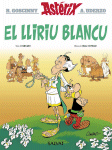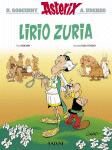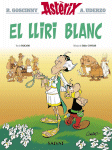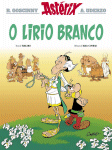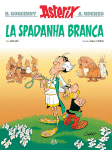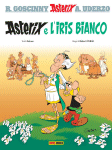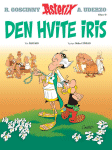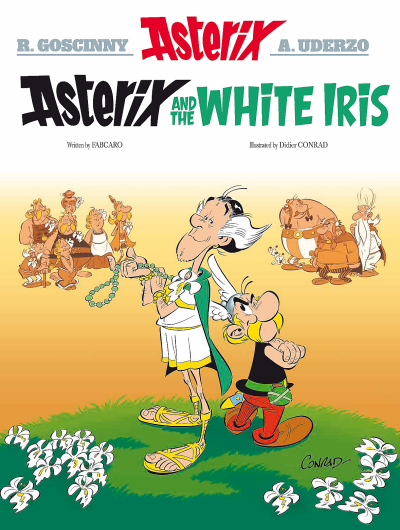
Writer: Fabcaro – Illustrator: Didier Conrad
Publisher: Les Éditions Albert René
Publication date: 23 October 2023
“To light up the forest, only one iris need bloom,“ the 40th adventure of Asterix and Obelix tells us. What everyone’s really waiting for is a smile to light up Vitalstatistix’s face! What’s happened to our Gaulish chief and why the perma-frown?!
News from the druids
The writer Fabcaro tells us more about the latest album and its enigmatic title: “The White Iris is the name of a new school of positive thought that started in Rome and has spread through major cities from Rome to Lutecia.
Caesar decides this method might have a beneficial effect on the Roman camps around the famous Gaulish village. But its principles also start influencing the villagers themselves… The teaser plate published in December gave a little taste of its effects!
I wanted to find a title in the spirit of Goscinny and Uderzo’s albums where the theme is often embodied by an actual object or a character (The Cauldron, The Soothsayer, The Great Divide, The Chieftain’s Shield, The Golden Sickle…) In this case, the iris symbolises goodwill and fulfilment, or at least that’s what everyone hopes…”

What’s the history of the iris?
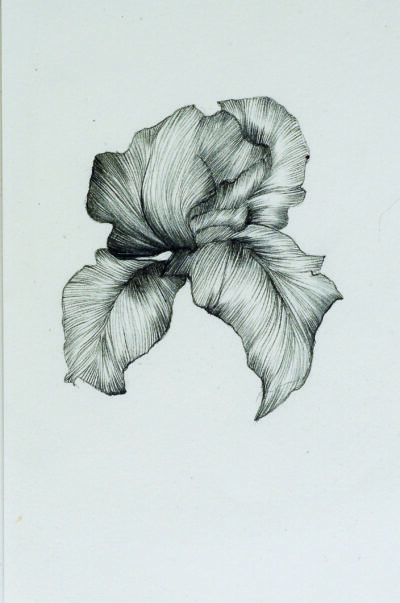
Laurence Gossart, Doctor of Arts at Université Paris I Panthéon-Sorbonne tells us more about this flower that appeared in the Cretaceous period – that’s 80 million years ago.
The iris has been given quite a lot of significance over the years. First of all, it was an Egyptian symbol particularly associated with Horus, the god of sunrise and sunset.
But Iris was also a Greek divinity, a kindly messenger of the gods and Hera’s favourite because she often brought good news. In ancient Greek “iris” means rainbow, and the Greek Iris was said to travel on a rainbow when she came down to earth. The flower reflects her name by incarnating the full palette of colours.
There are many varieties of iris: the yellow flag iris, the iris pallida, the iris siberica, the iris germanica and its subspecies the iris florentina. The florentina, a white iris, seems to have been especially prevalent all around the Mediterranean in ancient times, so ancient Greeks and Romans would have been familiar with it. In the Sixth Century, Clovis King of the Franks used the iris as a symbol that we now know as the fleur-de-lys. The story goes that when Clovis was at war with the Visigoths, a deer crossed the river Vienne, showing his army a safe place to cross where the banks were strengthened by the rhizomes of irises.
Various versions of the album
L’Iris blanc – Français – Editions Albert René
Asterix and the White Iris – Anglais – Sphere
Asterix and the White Iris – Anglais américain – Papercutz
Die Weisse Iris – Allemand – Ehapa Comic Collection
De witte Iris – Néerlandais – Editions Albert René
El Lirio Blanco – Espagnol – Salvat
El Lliriu Blancu – Asturien Bable – Salvat
Lirio Zuria – Basque – Salvat
El Lliri Blanc – Catalan – Salvat
O Lirio Branco – Galicien – Salvat
O Lirio Branco – Portugais – Edições Asa
La Spadanha Branca – Mirandais – Edições Asa
Asterix e L’Iris Bianco – Italien – Panini Comics
AEl Lirio Blanco – Espagnol mexicain – Hachette Livre México
Η λευκή Ίριδα – Grec – Mamouth Comics
Valkoinen Iiris – Finnois – Story house Egmont
Biały Irys – Polonais – Egmont
Den hvide Iris – Danois – Cobolt
Den hvite Iris – Norvégien – Egmont Serieforlaget AS
Den vita Irisen – Suédois – Egmont Comics





















